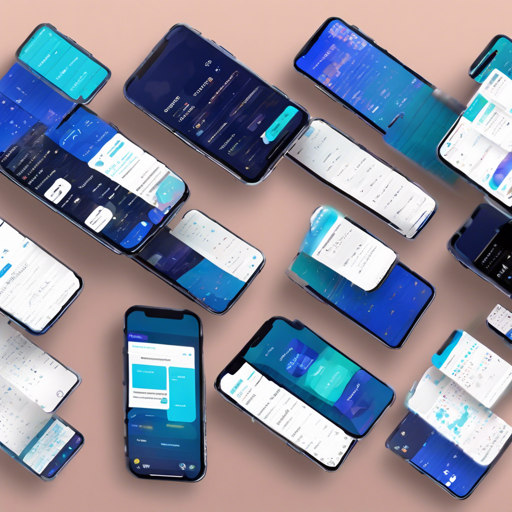Designing interfaces in Flutter can seem challenging at first, but with the right guidance, you’ll find it to be a stress-free and enjoyable process. This article will serve as your roadmap through Flutter’s layout system, illustrating how to arrange and manipulate widgets effectively. Let’s dive in!
Understanding Flutter Layouts
At the heart of Flutter’s UI system lies the concept of widgets. Think of widgets as building blocks that you can stack, arrange, and modify to create a beautiful user interface. In Flutter, layouts are primarily structured in two ways: rows and columns. This is similar to how you might organize your closet by hanging clothes in a vertical or horizontal fashion. Let’s explore the main layout widgets!
Key Layout Widgets
- Container: Acts like a box that can hold other widgets and apply padding, margins, and background colors.
- Row: This widget lays its children out horizontally, similar to how you might arrange books on a shelf.
- Column: Mirrors the Row, but arranges children vertically, akin to stacking plates on a table.
- Stack: Allows widgets to be layered on top of each other, like overlapping pictures in a scrapbook.
- Wrap: This widget flows its children to the next line when the space runs out, much like text wrapping in a document.
- ListView: A scrollable list of widgets, ideal for displaying many items, such as a favorite playlist.
A Note on Flex:
Flutter also introduces the concept of Flex widgets like Expanded and Flexible. Imagine a team of friends trying to fit into a car: some can squeeze in tightly, while others need more space. Similarly, Expanded makes a widget as large as it can be in its parent, while Flexible allows widgets to occupy space according to their needs.
Example Code Analysis
Let’s take a closer look at one of the Flutter layout widgets using an analogy.
Row(
mainAxisAlignment: MainAxisAlignment.center,
mainAxisSize: MainAxisSize.max,
crossAxisAlignment: CrossAxisAlignment.center,
children: [
Container(
padding: const EdgeInsets.all(0.0),
color: Colors.cyanAccent,
width: 80.0,
height: 80.0,
),
Container(
padding: const EdgeInsets.all(0.0),
color: Colors.blueAccent,
width: 80.0,
height: 80.0,
),
Container(
padding: const EdgeInsets.all(0.0),
color: Colors.orangeAccent,
width: 80.0,
height: 80.0,
),
],
) In this snippet, we have a Row with three Containers representing items in a shopping cart. The Row itself is like a checkout conveyor belt at a grocery store, where each Container represents a product placed next to each other, waiting to be scanned. The aligned positioning within the Row ensures that all products are displayed uniformly and attractively to customers.
Creating Layouts
Now that you’re familiar with the core concepts, let’s see how to build a simple layout:
- Start with a Container for your overall layout.
- Inside the container, use Row or Column to arrange your main widgets either horizontally or vertically.
- Set properties like padding and margin around your widgets for proper spacing.
Troubleshooting Common Issues
As you venture into Flutter layout design, you might run into a few hiccups. Here are some common problems and solutions:
- Widgets Overlapping: Ensure that you are using a Stack for overlapping widgets, and adjust their alignment using the Alignment properties accordingly.
- Widgets Not Showing: Check if the parent widget has bounded dimensions by using a SizedBox or wrapping it with a Container that has defined width and height.
- Excess Space: If your widgets are spaced too far apart, evaluate the used properties of mainAxisAlignment and crossAxisAlignment.
- Scroll Not Working: Ensure that you are using a ListView when displaying a list of items exceeding the screen size.
For more insights, updates, or to collaborate on AI development projects, stay connected with fxis.ai.
Conclusion
Mastering Flutter layouts opens a world of possibilities in mobile app design. With practice, you will be able to create complex interfaces with ease. Embrace the journey!
At fxis.ai, we believe that such advancements are crucial for the future of AI, as they enable more comprehensive and effective solutions. Our team is continually exploring new methodologies to push the envelope in artificial intelligence, ensuring that our clients benefit from the latest technological innovations.

